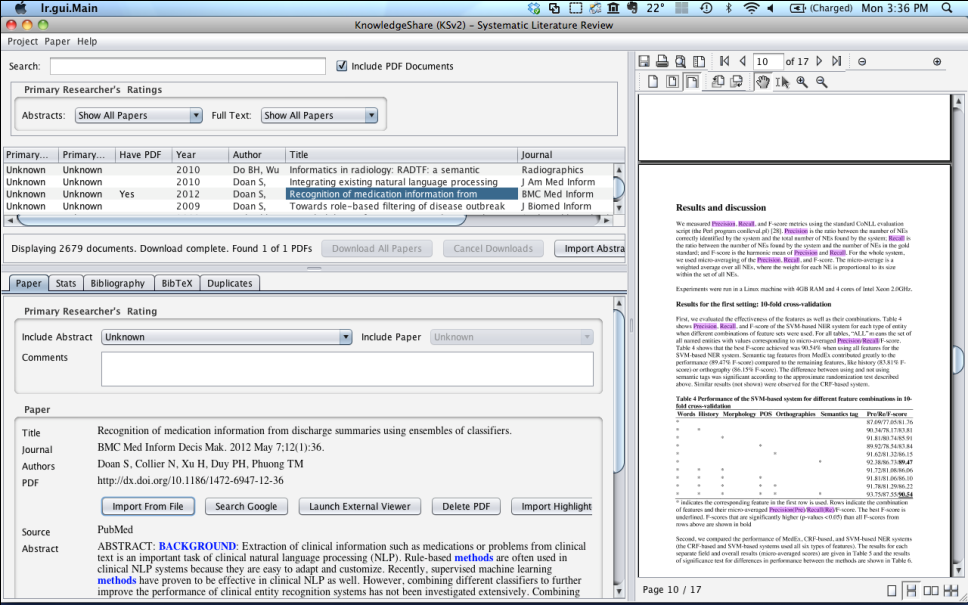Paper Tab
Shows more detailed information for the currently selected reference, such as Title, Authors, Abstract, Subject Headings (e.g. MeSH), as well as, the ability for adding user comments and for assigning the inclusion/exclusion for that individual reference.
When you click on the Paper tab, Synthesis will display additional information about the selected reference in the lower left hand window. If a PDF has already been associated with this abstract it will be displayed in the right hand window.
Figure: Paper Tab

The follow information is displayed about the reference:
- Title: The title of the reference.
- Journal: The journal and issue of the reference.
- Authors: The authors of the reference.
- PDF: The DOI (Digital Object Identifier) of the reference (i.e. web-location of the PDF)
- Source: The source database that this reference came from (e.g. PubMed). If the reference was imported from several source databases then all of those source databases will be shown (e.g. PubMed, IEEE).
- Abstract: The abstract of the reference.
- Mesh Headings: The Mesh Headings (or keywords depending on the source database) of the reference.
- PubMed URL: The PubMed URL website of the current reference. [note: only available for PubMed references]
- Reviews: URL website link to literature reviews that have included this reference. [note: only available for PubMed references]
- Related: URL website link to related (i.e. similar) references to this reference. [note: only available for PubMed references]
- PMC Citations: URL website link to references with PubMed Central (PMC) which have included this refertence. [note: only available for PubMed references]
Note: You can also drag and drop a reference from Synthesis into any word processing program (e.g. Microsoft Word, Text Edit, etc) and the reference will appear in the format: “Author(s). Title.Journal.Issue.” As seen below:
Brown MP, Grundy WN, Lin D, Cristianini N, Sugnet CW, Furey TS, Ares M Jr, Haussler D. Knowledge-based analysis of microarray gene expression data by using support vector machines.ProcNatlAcadSci U S A. 2000 Jan 4;97(1):262-7.